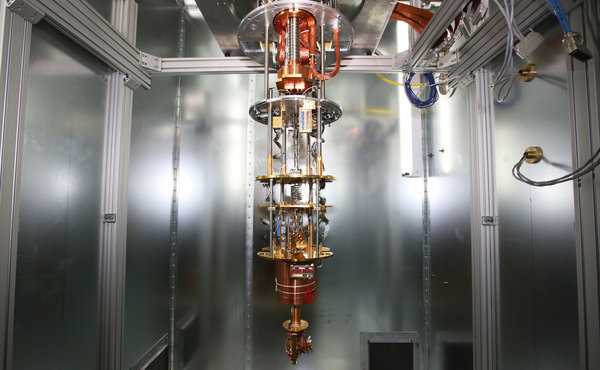Quantum Jump in Quantum Computing

Eventful progress on technology
A news bulletin released on the ‘Business technology’ section in the New York Times dated 21st March, written by Mr. Quentin Hardy, titled, ‘A strange computer promises great speed’, details the remarkable progress made by Lockheed Martin on the front of quantum computing. It generates interest to know more about quantum computing and some brief details on their effort. This development, indeed, seems to be a mind-boggling one, paving the way of incredibly high speeds of data-computing.
A quantum computer is a computer design which uses the principles of quantum physics to increase the computational power beyond what is attainable by a traditional computer. It is a computation device that makes direst use of quantum mechanical phenomena, such as superposition and entanglement to perform operations on data. Thus, quantum computers are different from digital computers based on transistors.
Currently, quantum computers have been built on the small scale and efforts are on to continue upgrading them to models. Major computer companies like IBM. Microsoft and HP have been working to develop quantum computers with the effort from their academic researchers and scientists. Lockheed Martin bought a version of D-Wave’s quantum computers with plans to develop and upgrade to commercial scale. Lockheed Martin is confident about their success in technology to become the first company to use quantum computing as part of its business.
How quantum computers work
Traditional computers work on the binary logic of ‘1’ or ‘0’. A quantum computer, however, stores as either a ‘1’, ‘0’, or a quantum superposition of the two states (anything between the ‘1’ and the ‘0). A ‘quantum bit’ is called a ‘qubit’ and this allows for far greater flexibility than the binary system. Specifically, this allows calculations of extremely great orders or magnitudes to be done in high speed beyond the realm of traditional computers.
The details of Lockheed Martin development
Irrespective of the skeptic attitudes of the other companies about finding solutions to the myriad problems faced in the development of quantum computing, Lockheed and D-Wave expect their progress could be used to supercharge even the most powerful systems, thus enabling solutions to some science and business problems millions of times faster than can be done today.
Ray Johnson, Lockheed’s Chief Technical officer, informed that his company would use the quantum computer to create and test complex radar, space and aircraft systems. As an example for the high speed, it would be possible to tell instantly how te millions of lines of software running a network of satellites would react to a solar burst or a pulse from a nuclear explosion – as of now, it would take weeks to compute this.
Possible domains of immediate application
Cancer researchers see a potential to move rapidly through vast amounts of genetic data. Another application is the determination of the behavior of proteins in the human genome. Researchers at Google have worked with D-Wave on using quantum computers to recognize cars and landmarks as a critical step in managing self-driving vehicles.
